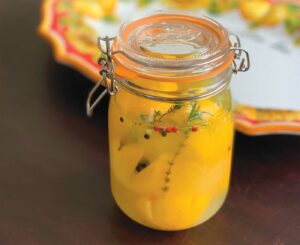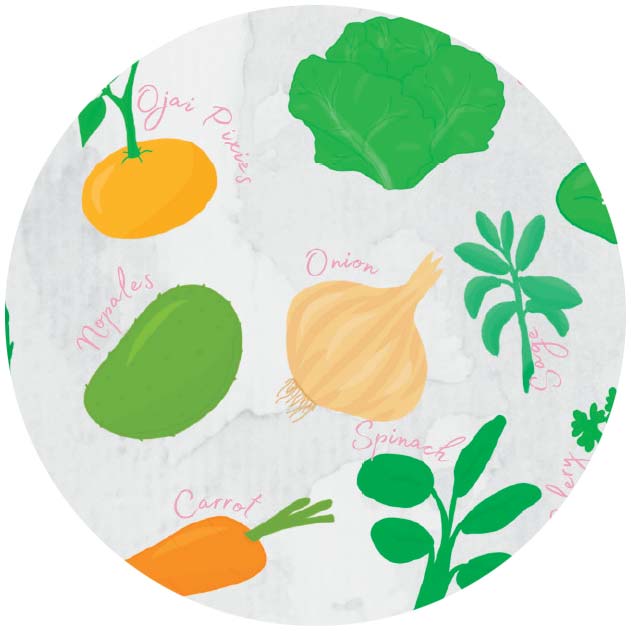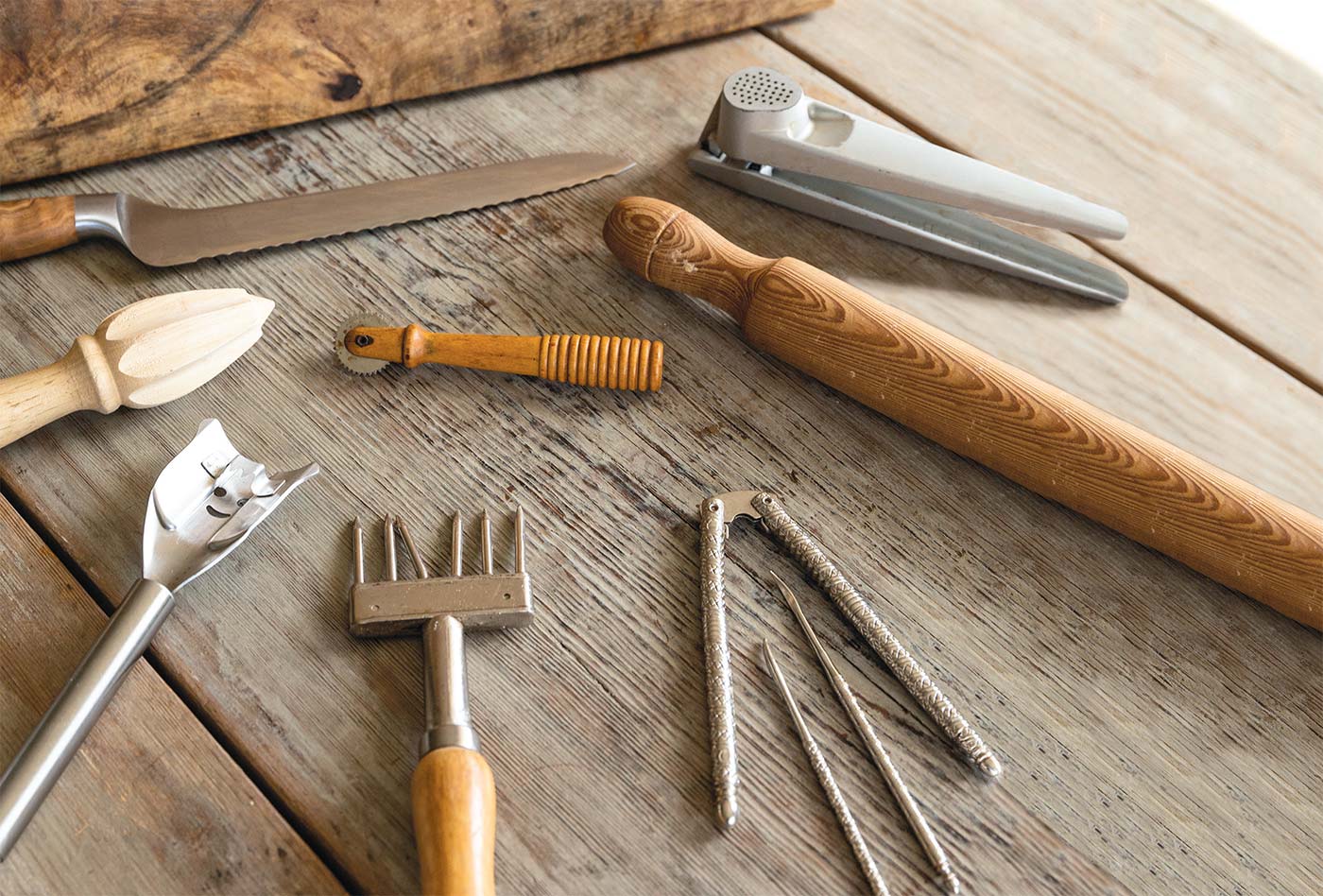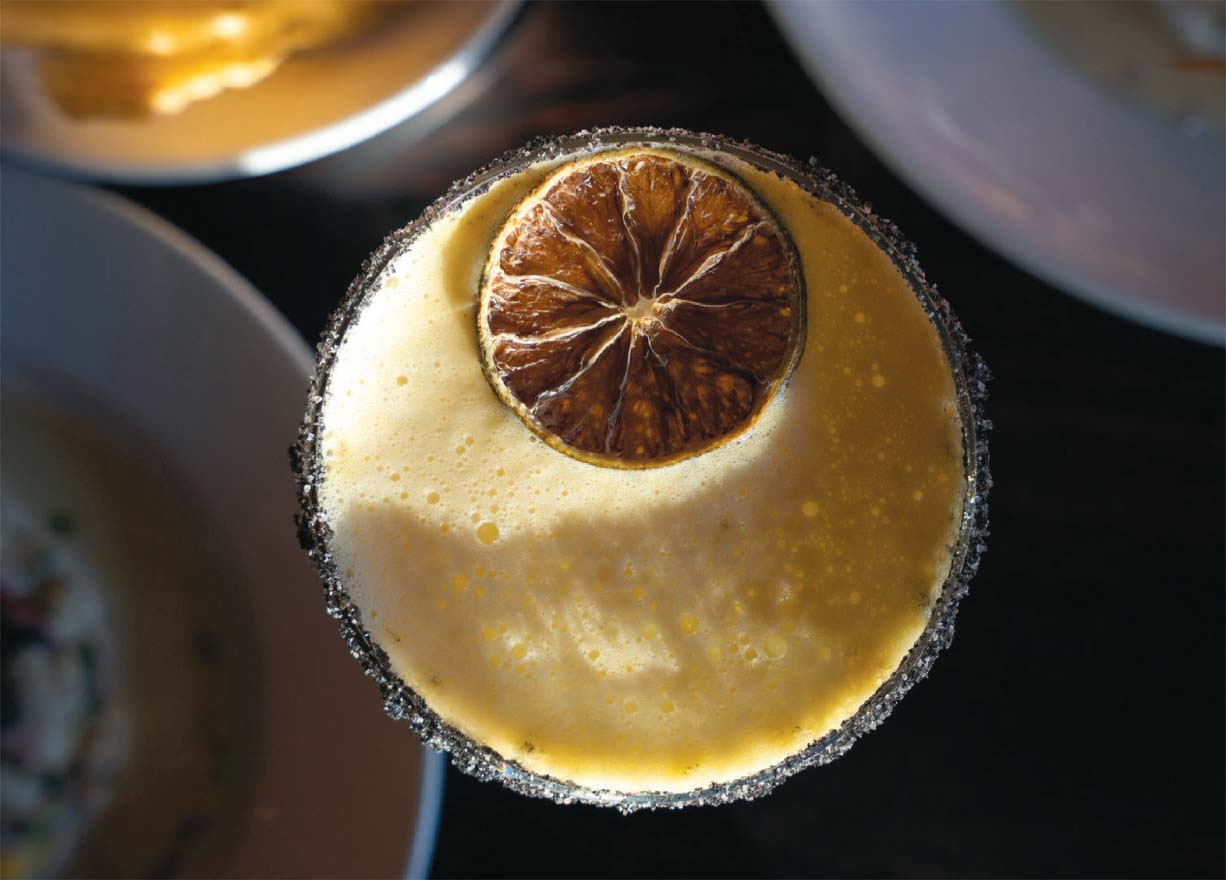
Preserved lemons add a sweet, salty citrus pop to dishes
Several years ago, we had a great problem: lemon trees that were too prolific. So after giving scads away, making lemonade, lemon bars, baked chicken and freezing juice, we still had lemons. Lots of them. We had to find more ways to use our bounty before they went to waste.
Making preserved lemons was the answer, same for Thomas Tilaka Kalb, executive chef and co-owner of Agnes Restaurant & Cheesery in Pasadena.
“I find myself making large batches of preserved lemons, Meyer lemons and limes about twice a year,” says Kalb. “Neighbors, regulars and family members all start to roll by the restaurant with big bags of citrus, plucked from the trees in their yards. I love taking that opportunity to expand our larder with these gems.”
To make preserved lemons, fill a glass jar with quartered fresh lemons mixed with salt and lemon juice and then let it hang out for a month. During the lactic acid fermenting process, the rind softens and becomes silky. It develops a salty, intense lemony flavor that’s acidic but not overly sour.
“Plemons,” as Kalb calls them, “combine the ability to add not only acid and salt, but an umami and agrodolce [an Italian tart-sweet condiment] flavor profile, where the combination of both aspects becomes greater than the sum of its parts.”
Described as “sunshine in a jar,” preserved lemons are commonly used in Middle Eastern, Mediterranean and Moroccan dishes, though they are versatile enough to extend well beyond these borders.
At Agnes, they provide “a sweet and salty citrus pop to salads, sauces and pastas,” Kalb says, calling out the restaurant’s Spaghetti and Clams (see recipe at EdibleSFValley.com). We’ve also been known to slip them into chicken piccata, pesto sauce and vegetable soups. For more ideas, look to recipes where lemon or vinegar is used.
Recipes typically specify using the rind, rinsed before adding. The pulp is sourer and saltier and has more structure, so we reserve it for puréed dishes where less is more. We’ll spoon some of the brine into dishes for an extra pop of flavor, too.
But don’t stop there. Add another dimension to the flavor with aromatics. Use savory additions like rosemary or thyme springs, whole peppercorns, fresh or dried chili peppers, cinnamon sticks or cardamom pods, alone or in combination. This isn’t an exhaustive list, so feel free to drop in other spices or ingredients near the beginning of the fermentation process.
We’re also seeing preserved lemons pop up more and more in sweet preparations, where they’re surprisingly good. When puréed with sugar, they bring a sweet-lemony zip to dessert doughs and batters. (Check out our take with the Blueberry–Preserved Lemon Muffin recipe)
Whether savory or sweet, preserved lemons are a simple, cost-effective DIY project. Plus they help reduce food waste and waste in general when you use whole lemons or the rinds of juiced lemons.
If you’re pressed for time, you can buy jarred preserved lemons at specialty stores and Middle Eastern grocers (like Woodland Hills Market). Either way, we encourage you to do what we do: Keep a jar of preserved lemons in your refrigerator so you always have them handy. They’ll last a year when refrigerated, but we think you’ll go through them much faster than that.
Like Kalb, we don’t limit ourselves to preserving only lemons. If you looked in our refrigerators, you’d see preserved Meyer lemons, limes, tangerines, thin-skinned oranges and even kumquats. Use these alternative citruses the same way you would use preserved lemons.
Next time you find yourself with extra lemons—or other citrus—preserve them. That way, you can squeeze more deliciousness from your meals at any time. All you need are lemons and salt. And a sprinkling of patience.
TOP 5 TIPS FOR PRESERVED LEMON SUCCESS
- Source organic lemons, or other citrus, from farmers’ markets or friends’ backyards.
- Avoid fruit from grocery stores because the rind has been waxed for a shine.
- Use kosher salt or fine sea salt; steer clear of iodized salt.
- Make sure the fruit is immersed in lemon juice at all times to prevent mold.
- A bit of white mold at the top is OK; remove it and use the rest. If there is a lot of white mold or mold of a different color, discard the batch. When in doubt, throw it out.
- Bonus: When making preserved citrus, you can add some orange juice to sweeten the brine. Just be sure the liquid still has a sour, tart and acidic flavor, which inhibits bacterial growth. To be precise, that’s at a pH of 4.5 or below


ABOUT THE CONTRIBUTOR
Beth Lee is a writer, recipe developer and the force behind the blog OMG! Yummy. She’s the author of The Essential Jewish Baking Cookbook: 50 Traditional Recipes for Every Occasion (Rockridge Press, 2021).
Sarene Wallace is the managing editor of Edible San Fernando Valley magazine. Sarene and Beth co-lead the Tasting Jerusalem Cooking Community, a global Facebook group that explores Middle Eastern cuisine.









